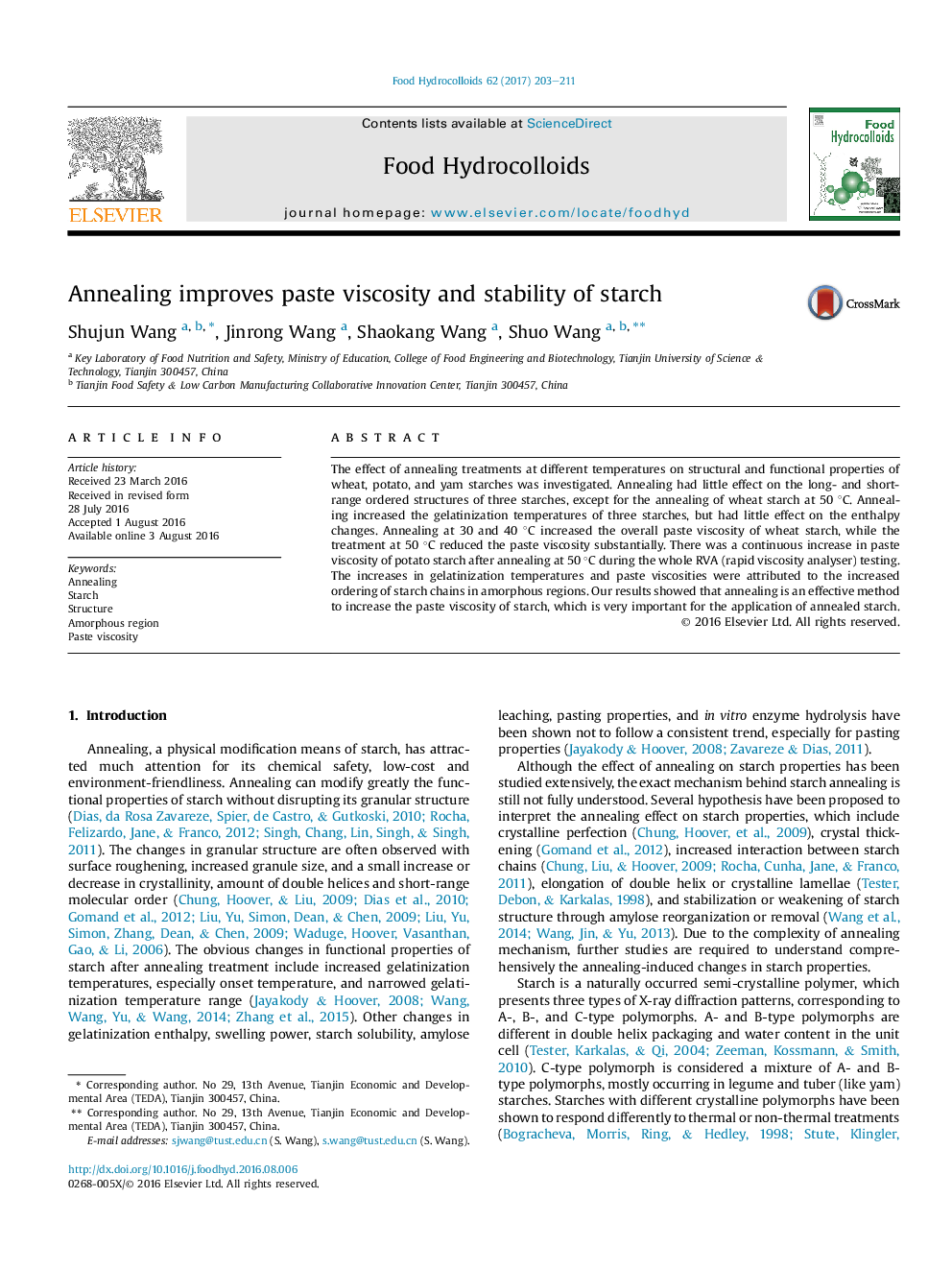| Article ID | Journal | Published Year | Pages | File Type |
|---|---|---|---|---|
| 604015 | Food Hydrocolloids | 2017 | 9 Pages |
•Starches with different polymorphs respond differently to annealing treatment.•Annealing had little effect on structures of wheat, potato and yam starches.•Annealing at 50 °C resulted in a continuously increasing viscosity of potato starch.•Ordering of amorphous regions was responsible for the increased viscosity of starch.
The effect of annealing treatments at different temperatures on structural and functional properties of wheat, potato, and yam starches was investigated. Annealing had little effect on the long- and short-range ordered structures of three starches, except for the annealing of wheat starch at 50 °C. Annealing increased the gelatinization temperatures of three starches, but had little effect on the enthalpy changes. Annealing at 30 and 40 °C increased the overall paste viscosity of wheat starch, while the treatment at 50 °C reduced the paste viscosity substantially. There was a continuous increase in paste viscosity of potato starch after annealing at 50 °C during the whole RVA (rapid viscosity analyser) testing. The increases in gelatinization temperatures and paste viscosities were attributed to the increased ordering of starch chains in amorphous regions. Our results showed that annealing is an effective method to increase the paste viscosity of starch, which is very important for the application of annealed starch.
Graphical abstractFigure optionsDownload full-size imageDownload as PowerPoint slide
